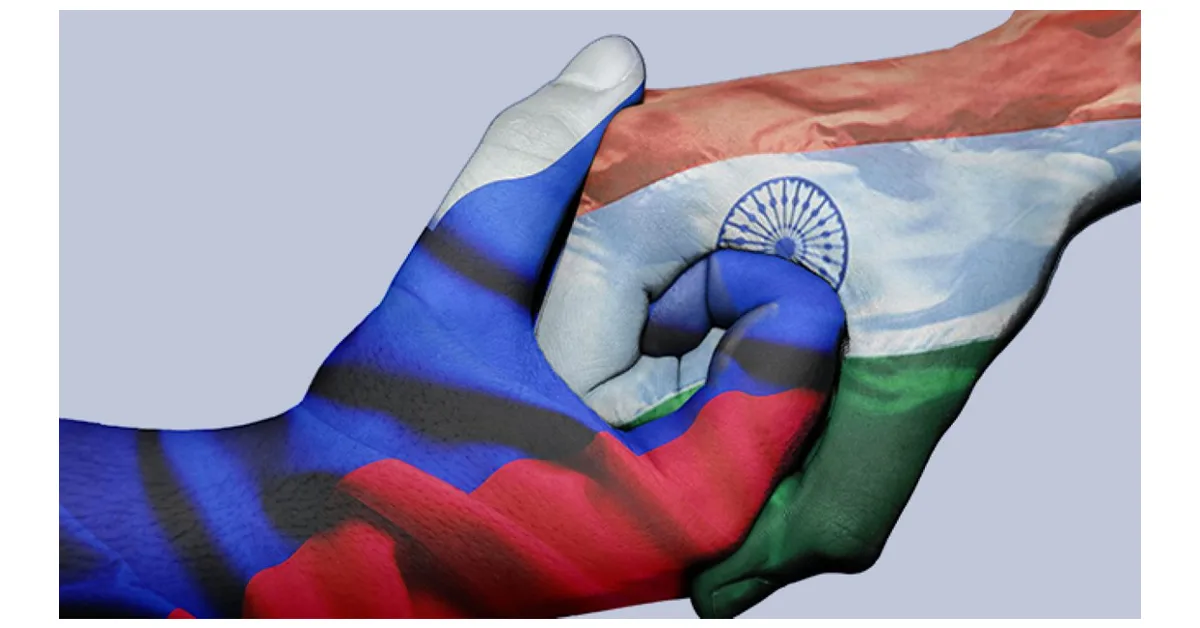Table of Contents
Toggle15th August 1947 is a memorable day for every India. It is not only a day of achieving Independence but also a day of celebrating valour and paying tribute to all those who made selfless sacrifices in the name of the country. On this day, the country gained its independence after a struggle that lasted more than 200 years. The day is celebrated as Independence day, marking the anniversary of the day the country gained independence from British colonial rule.
The Indian Independence is a tale of hope, alliances, sacrifices and inspiration for not only the Indians but also the world. But did you, the then Soviet Union, heavily influence the leaders of India’s freedom struggle from its first war of independence of 1857?
The Revolt of 1857
The associations between the European giant and the Indian subcontinents are dated far into the past. Most of the accounts of modern history proclaim, “accounts of the history of relations between the two countries begin by referring to the migration to India of the Aryans about 4,000 years ago from what is now known as Soviet Central Asia.” (Peter S. Duncan: The Soviet Union & India)
However, Russia came into the picture of the Indian freedom struggle after the first war of Independence in 1857.
“The forward-looking Russians closely watched the various anti-imperialist movements in the last century, particularly India’s first War of Independence in 1857 attracted their attention the most. They, in fact, were disappointed when the widespread risings in 1857 were brutally crushed.”
-Significance of Indo-Russian Relations in the 21st Century, V.D. Chopra
The First War of Independence (Revolt of 1857) was sparked by the Indian Soldiers against the British East India Company. The rebellion quickly escalated to a grand scale with the participation of every part of the society, such as the peasantry, nobility, landless men of all regions, etc., who joined the fight against the British. The war lasted for about a year, where the British were defeated in most parts of India but still managed to recover their hold in all the lost territories.
After the war, some historians believed that the British held the reprisal that led to the “untold holocaust”, which resulted in the merciless killing of over 10 million Indians. Unfortunately, the record and details remain ambiguous till date.
Several influential personalities and nobles in Great Britain supported the slaughter of millions of Indians.
However, the magnitude of the genocide shook other European nations. Russia marched to the steppes of Afghanistan, which alerted the British Army. The popular daily L’Estaffette urged the French government to “intervene in favour of the Indians, launch all our squadrons on the seas, join our efforts with those of Russia against British India”.
Russian Support To Indian Freedom Fighters
Russian oncoming and posing as a threat to Britain piqued the interest of the Indians in the hitherto Asian & European giant. Several Russian scholars and leaders frequently visited India. The most notable visit was of Ivan Pavlovich Minaev, Professor at St Petersburg University, who paid three visits to India between 1874 and 1886.
He was also an observer during the foundation of the Indian National Congress in 1885. He described the historical event as a significant attempt for “the development of the feeling of nationalism in India, for the unification of India”.
Nationalist Bal Gangadhar Tilak, in 1905, approached the Russian consulate to inquire about training Indians in the Russian military schools. The Lokmanya Tilak planned on building the armed forces against the Britishers.
The Exchange of Correspondence Between Gandhiji & Tolstoy

The father of the nation Mohandas Karamchand Gandhi and the Russian thinker, Leo Tolstoy share a close association with each other. Tolstoy’s ideal of “simplicity of life and purity of purpose” influenced Gandhi deeply. The “love as a law of life” and principles of non-violence based on love for the entire mankind were deeply embedded in the writings of Tolstoy. Thus, there is no wonder that Gandhi’s ideology was heavily influenced by the Russian Philosopher & writer.
Gandhi’s first reference to Tolstoy occurred in 1889 in his ‘Guide to London’, where he quoted from Tolstoy’s essay on “Why People Become Intoxicated”. During his days in South Africa, he also published a biographical sketch of Tolstoy after his death.
Mahatma Gandhi was extremely impressed by the Tolstoys’, “Letter to Hindu”, which was written in reply to the letter of Tarak Nath Das, an Indian freedom fighter who advocated the violent approach to gain freedom.
“You say that the English have enslaved your people and hold them in subjection because the latter have not resisted resolutely enough and have not met force by force.But the case is just the opposite. If the English enslaved the people of India, it is just because the latter recognised, and still recognise, force as the fundamental principle of the social order. In accord with that principle, they submitted to their little rajahs and, on their behalf, struggled against one another, fought the Europeans and the English, and are now trying to fight with them again.
A commercial company enslaved a nation comprising two hundred million. Tell this to a man free from superstition, and he will fail to grasp what these words mean. What does it mean that thirty thousand men, not athletes but rather weak and ordinary people, have subdued two hundred million vigorous, clever, capable, and freedom-loving people? Do not the figures make it clear that it is not the English who have enslaved the Indians but the Indians who have enslaved themselves?”
-Leo Tolstoy; A Letter To a Hindu– The Subjection of India- Its Causes & Cures (Chapter-V)
In his last letter dated 7 September, 1910, Tolstoy thanked Gandhi for the articles on “passive resistance’ from Indian Opinion and wrote that “Love is the aspiration for communion and solidarity with other souls – – the supreme and unique law of human life.”
Series Of Revolutionary Events
Paradoxically, it was the Russian defeat in 1905 due to the sinking of the Russian fleet by the Japanese that fired up the freedom fighters of the colonised Asian countries as it was the first time in modern history that an Asian nation had defeated a great European power.
However, the historical event of the Russian Revolution of 1917, followed by the Second World War (1939 to 1945), shook the foundations of British rule in India and added the final strokes in further weakening the hold of the British in India.
The Russian Revolution led to the rise of the radicals in India, inspiring them to launch a fully armed rebellion against Britain. The new leaders of Russia also reciprocated the idea of the Indian freedom movement.
In 1908, when the British government convicted Lokmanye Tilak on the charges of sedition, Vladimir Lenin, a Russian revolutionary, politician, and political theorist, condemned the British government harshly.
“At the infamous sentence pronounced by the British jackals on the Indian democrat Tilak, a question in the British House of Commons the other day revealed that the Indian jurors had declared for acquittal and that the verdict had been passed by the vote of the British jurors. This reprisal against the democrat by the lackeys of the moneybags evoked street demonstrations, and a strike in Bombay.”
–Vladimir Ilʹich Lenin on the arrest of Lokmanya Bal Gangadhar Tilak
Indian Freedom Fighters & Their Russian Inspirations
The October Revolution, also called Bolshevik Revolution, the second and last major phase of the Russian Revolution of 1917, inspired several Indian revolutionaries and freedom fighters of the time, whose tale of glory still inspires the youth of today.
The Ghadar Party was among some organisations that got ignited from the first Russian Revolution in 1905. Mohandas Karamchand Gandhi regarded it as “the greatest event of the present century” and “a great lesson to us”. As per Gandhi, India was also switching to this “Russian remedy against tyranny”.
Mahatma Gandhi was not the only one who was inspired by the happening in Russia in 1917. Here are a few examples of literary and political figures of the colonial India who were inspired by the Russian revolution and joined forces to seek the independent India:
-
Rabindranath Tagore:

Pic Credit: www.nonviolent-resistance.info
Rabindranath Tagore’s “Letter to Russia” is considered as one of the most peculiar landmark views on the October Revolution. His visit to Russia left behind not just memories, but some of the most valuable letters that were translated into Russian in 1956. Letter to Russia has a deeper thought and reflection about a nation that swung between love and hatred, an analogy to the situation in both the countries.
“In stepping on the soil of Russia, the first thing that caught my eye was that in education, at any rate, the peasant and the working classes have made such enormous progress in these few years that nothing comparable has happened even to our highest classes in the course of the last hundred and fifty years….
The people here are not at all afraid of giving complete education even to Turcoman of distant Asia; on the contrary, they are utterly in earnest about it. If I hadn’t seen it with my own eyes, I could have never believed that in just ten years they have not only led hundreds of thousands of people out of the darkness of ignorance and degradation and taught them to read and write, but also fostered in them a sense of human dignity. We need to come here specifically to study the organization of education.”
– Excerpt from Letter to Russia from Rabindranath Tagore
-
Shaheed-e-Azam Bhagat Singh:

Bhagat Singh, known for his valour and courageous sacrifice to free India from colonial rule, too had a Russian connection in regards to his ideology and vision. Inspired by the Russian Revolution, he formed the Hindustan Socialist Republican Association (HSRA) in 1928 at the Ferozeshah Kotla ground in Delhi. He firmly & vocally supported the Russian Revolution and propagated his support to the Lenin & Marxism views of the society.
On January 21, 1930, Bhagat Singh and his HSRA comrades, accused in the Lahore Conspiracy Case, appeared in the court wearing red scarves and raised slogans “Long Live Socialist Revolution”, “Long Live Communist International”, “Long Live People” “Lenin’s Name Will Never Die”, and “Down with Imperialism”. He then read the text, “ON LENIN DAY WE SEND HEARTY GREETINGS TO ALL who are doing something for carrying forward the ideas of the great Lenin. We wish success to the great experiment Russia is carrying out. We join our voice to that of the international working class movement. The proletariat will win. Capitalism will be defeated. Death to Imperialism”.
Even on the day of his hanging, Bhagat Singh was reading a book on Lenin named, “Reminiscences of Lenin”, by Clara Zetkin, a German Marxist.
-
Madam Bhikaji Cama

Madam Bhikaji Cama was probably the first Indian to appreciate the role of the working class in the 1905 Russian Revolution, the first Indian abroad who got interested in Marxism and the first ever to realise the significance of Lenin and the Bolsheviks.
“I stand before the tribunal of human justice because Socialism spells Justice…I believe a day will come when India will awake and follow the example of our Russian Comrades to whom we particularly send our fraternal greetings.”
-Madam Bhikaji Cama, 1907
-
Bhupindranath Dutta

Bhupendranath Dutta, younger brother of the patriot-saint Swami Vivekananda was heavily influenced by the Russian Revolution, tried to implement its lessons in Indian conditions. He joined the Comintern in Moscow in 1921.
Dutta had sent his thesis “Communist Revolution- Final Solution of the Indian Problem”. And received a reply from Lenin himself, who advised him not to think about the social classes but to give importance to peasants’ causes which was important for India’s liberation.
-
Captain Lakshmi Sehgal

Captain Lakshmi Sahgal was among the fearless visionaries of our freedom struggle who stood for working class unity against the colonial rule. She got to know about the event of the Bolshevik Revolution, Lening and the nascent commmunist movement in India through Lakshmi Suhasini Nambiar, who stayed with the family of Lakshmi Sahgal as a political fugitive during the Meerut Conspiracy Case.
The words left her deep impression and helped in seeing beyond the middle-class aspirations for freedom and laid the foundation for her later commitment for an independent nation.
Moscow Vetoing The West on Goa Liberation

Portuguese were the first to arrive in India and last to leave. While the rest of the country got independence from British rule in 1947, it was not until 1961 that Goa gained independence from Portugal’s rule. In 1961, India launched air, sea and land operations to free the territory.
This step of India was condemned by the powerful countries, the USA, Britain, France, etc., as they passed the UN resolution deploring India’s action.
It was at this stage that Moscow vetoed this resolution against India. Describing the situation, historian and author of India-USSR relations, S.R. Sharma writes, “The Soviet veto saved India from a very awkward situation as the West was determined to get a ceasefire and withdrawal resolution passed in the Security Council.”
Soviet leader Leonid Brezhnev addressed and urged the Indians to ignore Western indignation as it came “from those who are accustomed to strangle the people’s striving for independence… and from those who enrich themselves from colonialist plunder”.
India & Russia: Post-Independence Journey Till Today


Russia helped India build several infrastructures, industries and research centres after its Independence. After the dissolution of USSR, Russia regained and inherited its close relationship with India
The present strategic partnership between India & Russia has been built on five major components: politics, defence, civil nuclear energy, anti-terrorism cooperation and space. India & Russia has recently celebrated their 51st anniversary of the Treaty of Friendship and Cooperation, signed on 9th August, 1971.
Russian laboratories and researchers played a key role in developing India’s first polio vaccine, produced on a large scale of 100 million doses annually. The collaboration also established BIBCOL Corporation (Bharat Immunological and Biologicals Corporation Limited) was created to produce these vaccines. Apart from that, the India-Russia association continued to achieve greater heights with laser treatment of TB facility in India, establishing the National Aerospace Laboratory, the first experimental aviation design bureau in the history of India, the Indo-Russian Centre for the geophysical instrument, the Institute of Nuclear Physics, Siberian Branch of the Russian Academy of Sciences, etc. are many examples of accomplishments in the field of science & technology.
Apart from this, the countries have been continuously associated with high-end deals in the military, commerce, etc.
Conclusion:
The dynamic between Russia and India has grown stronger over the years and is known to be most reputed. No doubt, the roots of this association go far back in terms of philosophy, ideology, support and respect. The present holds both the countries together even more closely.
Both countries witness a massive exchange in education, research and culture. At present, a huge majority of Indian students going abroad opt for the Russian university to the comfort and security it offers them.
As the country celebrates the 75th anniversary of achieving Independence, we hope that the bonds between both countries may continue to perish further.
Happy Independence Day!
Citations & References:
- Shrimali, Shridhar. India Quarterly, vol. 46, no. 2/3, 1990, pp. 210–14. JSTOR, http://www.jstor.org/stable/45073096. Accessed 9 Aug. 2022.
- Rothermund, Dietmar. “India and the Soviet Union.” The Annals of the American Academy of Political and Social Science, vol. 386, 1969, pp. 78–88. JSTOR, http://www.jstor.org/stable/1037616. Accessed 10 Aug. 2022.
- Lindy, Moore. “From Russia with Love: Tolstoy, Gandhi and Isabella Fyvie Mayo.” Текст. Книга. Книгоиздание 2 (6) (2014): 56-71.
- Rekha, Chandra, and Vinod Patney. India-Russia Post Cold War Relations: A New Epoch of Cooperation. Routledge, 2017.
- Nehru, Jawaharlal. Discovery of India. Penguin UK, 2008.
- Budhwar, Prem K. “India-Russia relations: Past, Present and the future.” India Quarterly 63.3 (2007): 51-83
- Bhattacharya, Malini. (2017). The Russian Revolution and the Freedom Struggle in India: Rabindranath Tagore’s Letters from Russia. Agrarian South: Journal of Political Economy. 6. 237-262. 10.1177/227797601773184
- Chopra, V. D., ed. Significance of Indo-Russian Relations in 21st Century. Gyan Publishing House, 2008.





